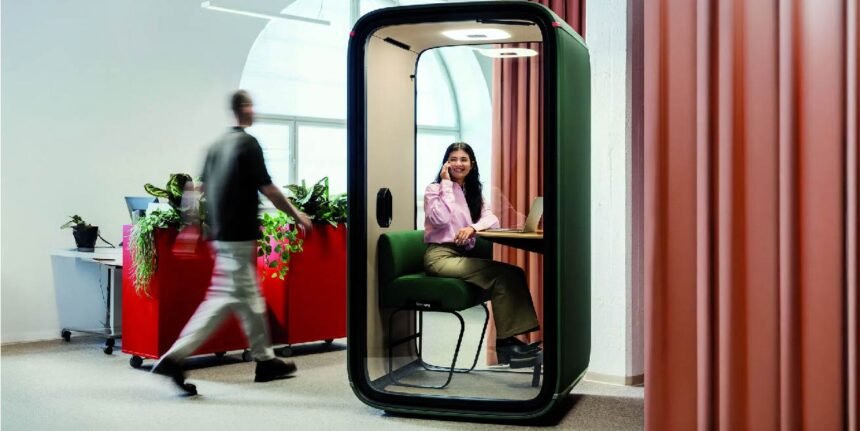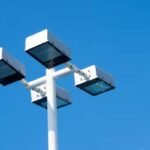The experience of dining out is no longer defined solely by the food. Guests today look for an atmosphere that makes them feel comfortable, relaxed, and entertained. The right ambience can shape how long diners stay, how much they spend, and whether they return.
Technology has opened a new chapter for restaurants by giving them more control over their environments. Lighting and sound, once static and universal, can now be customized at the level of restaurant booths directly accessible to customers. This personalization creates a unique appeal that modern diners embrace.
Research shows that restaurants playing the right background music can see overall sales increase by around nine percent, while poor choices can lead to losses of about four percent. At the same time, peak dining hours often result in restaurant noise reaching an average of seventy-nine decibels, a level that makes conversation difficult. Surveys reveal that nearly a quarter of customers list excessive noise as one of their top complaints, placing it just behind poor service.
By addressing these issues with integrated booth lighting and sound control, restaurants are creating experiences that not only satisfy guests but also encourage them to return.
Smart Lighting: Creating Mood Through Innovation
Lighting has always been tied to mood, and modern restaurants are learning how to harness that connection. Adjustable LED restaurant booth lighting enables managers to fine-tune brightness and color temperature, instantly altering the ambiance of a space. A warm glow can make diners linger over dessert, while cooler tones may keep lunchtime visits brisk and efficient.
The ability to dim lights or adjust color shifts helps craft moments that stand out. Some venues even employ spotlighting to highlight dishes or drinks as they arrive at the table. Motion-sensing lights now add another dimension, conserving energy while adjusting automatically when diners arrive or leave. The sustainable impact is significant, since modern systems consume less power than traditional bulbs.
Lighting can also follow the natural flow of a day. Booths may be set to brighten during lunch hours and soften as the evening progresses. Restaurants that host themed nights can match their lighting to the event, whether that means a romantic glow for couples or bold colors for a festive crowd. These innovations turn lighting into an active tool for building atmosphere.
Sound Control: Shaping Acoustics for Comfort
Noise is one of the most common complaints among restaurant visitors, and integrated sound systems in restaurant booths are helping to alleviate this issue. Directional speakers give each booth its own soundtrack, while noise-reducing panels soften the chaos of a busy dining room. Diners can enjoy music that suits the moment without being overwhelmed by sound from other tables.
The ability to adjust soundscapes creates intimacy during quiet meals or vibrancy during celebrations. When paired with background noise management, these systems reduce the strain of raised voices and missed words. Privacy is another essential benefit, as better acoustics ensure conversations feel protected rather than exposed.
Studies show that sound levels above 70 decibels can alter taste perception, reducing the enjoyment of food and discouraging repeat visits. Music tempo and volume also play a role in behavior. A slow tempo encourages diners to stay longer and order more, while faster beats help maintain steady turnover. Advanced systems now include real-time decibel monitoring, providing staff with alerts if the noise level rises too high. This makes sound management a continuous and dynamic part of the service.
Technology Integration: The Smart Booth Ecosystem
What makes these advances even more powerful is the way they connect. Many restaurants now utilize centralized systems that enable staff to control booth lighting and sound through apps or touchscreens. Guests may even access these features directly. Integration with reservation platforms can take it further by remembering a customer’s preferences and recreating the same ambience at their next visit.
Artificial intelligence is adding another layer, creating playlists or lighting combinations based on the occasion. Soft tunes and candle-like lights may welcome a couple celebrating an anniversary, while a group of friends might enjoy brighter colors and upbeat music.
The Internet of Things allows booths to be part of a larger system, syncing with the entire restaurant. Sensors can track occupancy or measure light and sound in real-time, adjusting settings without requiring staff intervention. Scene modes are another step forward, allowing restaurants to shift an entire booth’s atmosphere with a single command, whether the setting is intended for a family meal, a business meeting, or a date night. These tools free staff to focus more on hospitality while technology takes care of the details.
The Customer Experience Advantage
When guests feel that their surroundings reflect their mood, they tend to stay longer and spend more. Booth environments tailored to the occasion build an emotional connection that deepens loyalty. A romantic dinner becomes more memorable under soft lighting, while a lively group event gains energy from brighter tones and music.
Data show that nearly forty percent of restaurants are now classified as quiet or moderate in terms of noise levels, a clear response to customer preferences. By improving acoustics, restaurants not only reduce complaints but also boost reviews and recommendations. This ripple effect creates stronger word-of-mouth marketing.
Ambience also affects perceived value. Diners often accept higher prices when the setting feels special. A booth that provides privacy, comfort, and a personalized experience becomes part of the product itself. For many, the memory of a unique dining experience outweighs the menu alone.
Business Case: ROI of Ambience Technology
The financial side of ambient technology is equally compelling. While the initial investment in booth lighting and sound systems may seem high, the returns are measurable. More extended visits and increased average check amounts quickly offset the costs. Guests who stay for an extra course or a second round of drinks deliver significant revenue gains.
Energy savings also contribute to the picture, as modern LED systems use significantly less electricity. Automation reduces staff workload, since technology handles much of the adjustment and monitoring. Compared with traditional set-ups, integrated systems require less maintenance and last longer.
Market data indicate steady growth in innovative hospitality solutions, with restaurants of all sizes beginning to adopt them. Small venues benefit from fewer complaints and faster table turnover, while luxury restaurants use the systems to reinforce exclusivity and premium pricing. By increasing check sizes and minimizing negative experiences, ambience control creates a reliable path to return on investment.
The Ambient Edge: Why Lighting & Sound Make Restaurants Thrive
Lighting and sound are no longer background details. They are central elements that shape diners’ experiences of a meal and how restaurants perform financially. From setting the right mood to protecting conversation privacy, these technologies transform restaurant booths into dynamic, multi-sensory spaces.
Owners who view ambiance as an investment rather than decoration are already reaping the benefits. With sales lifts of up to nine percent from the right music, lower complaints from reduced noise, and measurable returns on comfort, the value is clear. Restaurants that take the time to integrate innovative booth systems are not only creating pleasant spaces but also enhancing the overall dining experience. They are building experiences that guests remember and share.
For any venue seeking to stand out, tailoring booth ambience through lighting and sound is one of the most powerful steps forward. It brings together comfort, technology, and atmosphere in a way that makes dining truly memorable.









